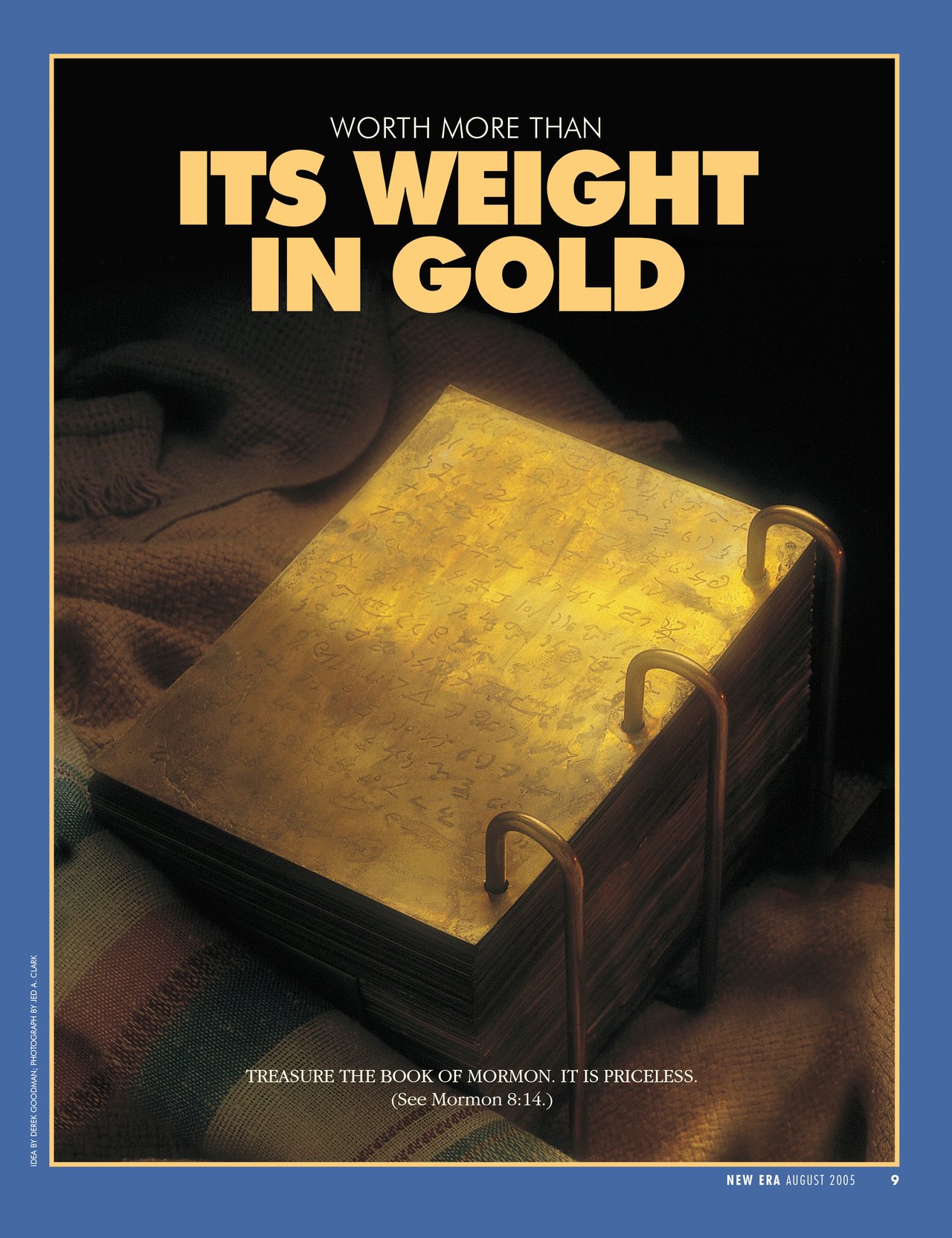The Weight of the Plates


Physical descriptions of the plates.
Date | Length | Width | Height | Individual Plate Thickness | Source |
August 11, 1829 | 8 in. | 6 in. | - | 1/8 in. | |
December 1830 | 7 in. | 6 in. | 6 in. | - | The Philadelphia Album (unsourced) [2] |
March 19, 1831 | 8 in. | 8 in. | - | "tin plate" | (second hand) |
November 7, 1832 | 12 in. | 12 in. | 6 in. | - | |
1839 | 8 in. | 8 in. | 6 in. | "very thin" | (second hand) |
1840 | 7 in. | 8 in. | 6 in. | "not quite as thick as common tin" | Orson Pratt[BIO] (second hand)[6] |
April 18, 1841 | 8 or 10 in. | "less in width" | 5 in. | "panes of glass" | |
March 1, 1842 | 8 in. | 6 in. | 6 in. | "common tin" | Joseph Smith[8] |
1842 | 8 in. | 6 in. | - | - | |
August 1859 | 8 in. | 7 in. | 4 in. | "common tin" | |
July 31, 1878 | 8 in. | 6 or 7 in. | - | "just so thick, that characters could be engraven on both sides" | |
July 11, 1881 | 9 in. | 6 in. | - | "parchment" |
How big were the plates?
According to an 1842 description from Joseph Smith,[BIO] the Book of Mormon was engraved on "plates which had the appearance of gold."[13] Joseph said they were six inches wide, eight inches long, and six inches thick, and the leaves were almost as thick as "common tin."[14]
Other descriptions of the plates closely match these dimensions:
How much did the plates weigh?
Those who handled the plates reported that they weighed between 40 to 60 pounds.[15] Others more vaguely described them as "very heavy."[16]
But if the plates were about 6x6x8 inches (288 cubic inches) and made of gold, wouldn’t they have weighed over 200 lbs?
Yes, if the plates were a solid brick of pure gold.[17]
Weren't the plates supposed to be made of pure gold?
No. The Book of Mormon mentions another set of plates (from the Jaredites) that were made of “pure gold" (Mosiah 8:9). The Book of Mormon doesn't specify the material of the plates that Moroni buried and Joseph translated. It only identifies them as "plates"[18] made of “ore,”[19] which just means some kind of metal.
Related Question
Did Joseph Smith originally imagine Moroni was a magical treasure guardian?
Read more in Moroni's Visit to Joseph Smith
So then why are they called the “golden plates”?
The plates were made of a metal that looked like gold. Joseph Smith and the Eight Witnesses said the plates had “the appearance of gold,”[20] which is how they came to be called the "gold(en) plates."[21]
If the plates weren't made of pure gold, then what were they made from?
Probably some kind of gold and copper alloy,[22] like tumbaga,[23] which was used in pre-Colombian Mesoamerica. A gold and copper alloy, like tumbaga, would be consistent with the reported dimensions, appearance, and weight of the plates.[24]
If the plates weren’t gold, why did Moroni warn Joseph Smith about trying to profit from them?
The plates looked like gold and would have appeared to be very valuable to Joseph, and Joseph and his family were poor.[25] According to his 1832 history, he was tempted by their potential worth.[26]
So does the density of gold-copper alloy match up with the reported dimensions of the plates and the reported weight of 40-60 pounds?
Yes. Many people have done the math and found that gold-copper alloy is consistent with the reported dimensions and weight of the plates.[27]
Wouldn't 40-60 pounds be too heavy to carry around?
No, apparently not. Joseph’s mother, Lucy Mack Smith, recounted that Joseph carried the plates alone over three miles while evading mobbers who tried to ambush him.[28]
Boy Scouts commonly carry 40 to 60-pound packs on hikes,[29] and adult soldiers routinely run and jump with 60 to 100-pound packs.[30]
- Nick
“Doesn’t matter since they were handled by several people the weight was bearable.” - Bret
“A mixer of Gold/Copper would be a rose color, so probably not the appearance of "Gold". If you add some silver to the gold and copper you then get the look of 14kt or 10kt gold, which would give the appearance of "Gold" to everyone who viewed them, and much light than pure gold.” - Taylor W.
“I can see why we don't get specific about this in Sunday School. Basically all the eye witnesses say about the same thing.” - Jacob S.
“Seems to me like the reality of the gold plates is well established from eyewitnesses. Weird that people use the argument about how much they weighed to cast doubt on this.” - Alex F.
“Lol tumbaga. I didn't realize this was something people were mad about.”



 about this topic
about this topic